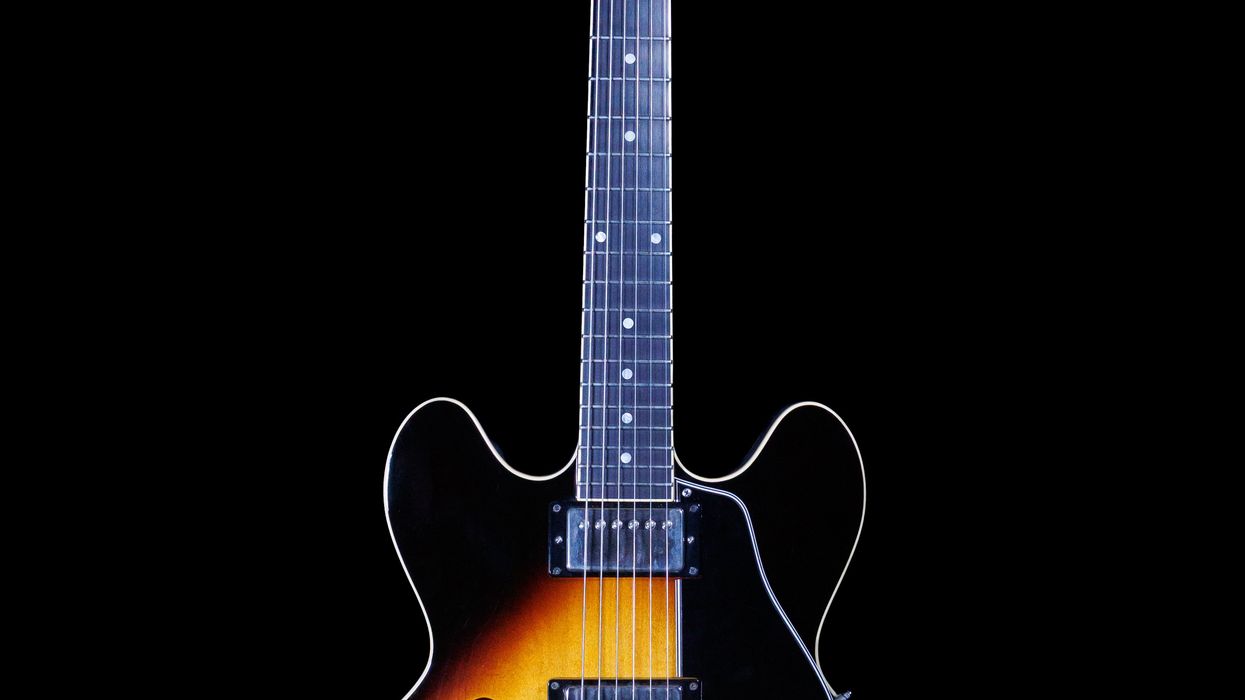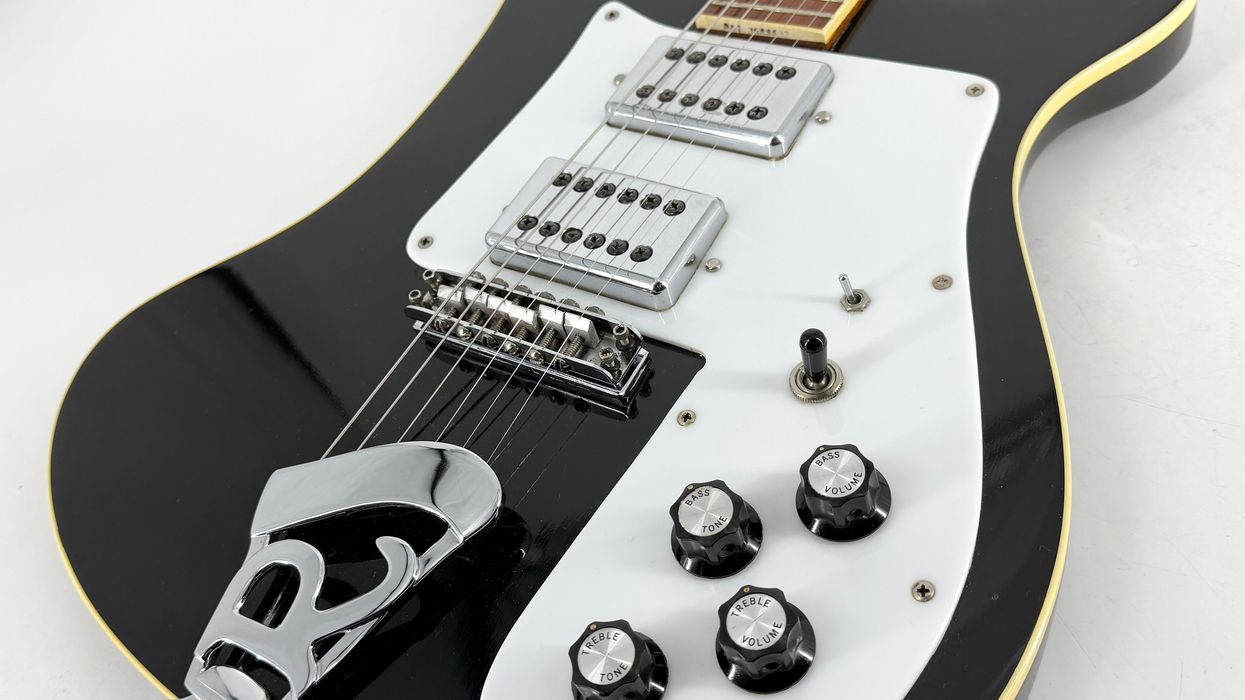The successful sales of the Les Paul model, launched in 1952, convinced Gibson to expand its solidbody line to include a variety of guitars aimed at players from beginner to professional. This led to the introduction of both the low-priced, flat-bodied, single-pickup Les Paul Junior and the high-priced, elaborately appointed Les Paul Custom in July 1954. By 1955, the Les Paul line also included the Les Paul TV (aka TV Yellow) and the Les Paul Special. The Les Paul Special, TV, and Junior became double cutaway by 1958.
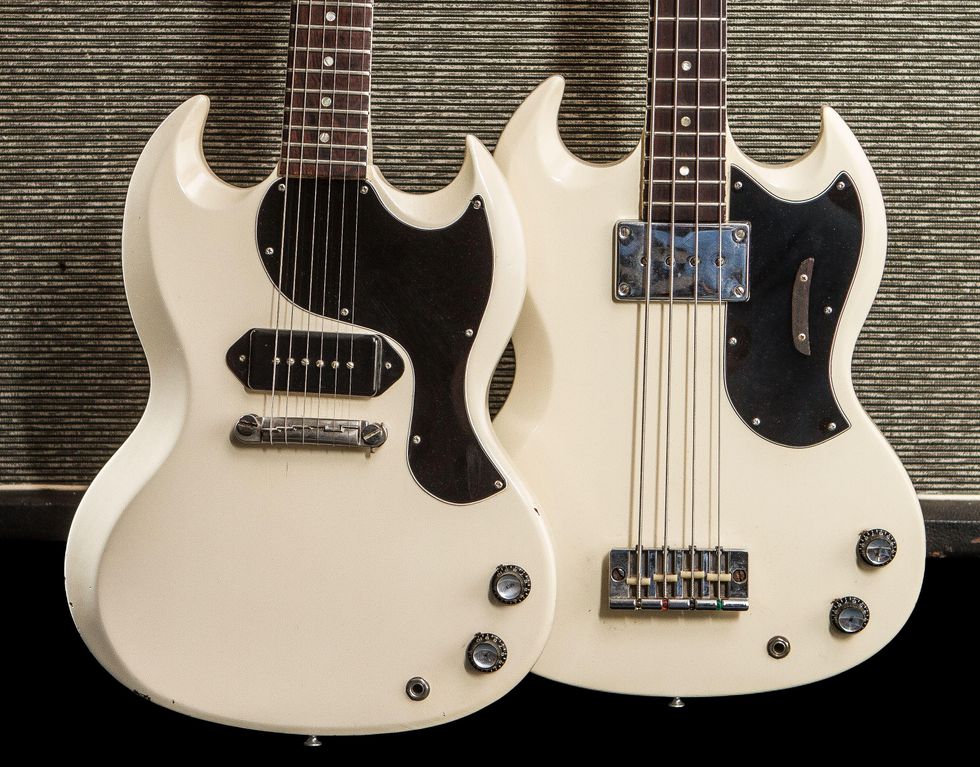
This close-up shows both instruments in remarkably good condition, as well as their to-the-point electronics.
By 1960, waning sales for Gibson’s original Les Paul guitars prompted the company to completely redesign them. The Les Paul Standard and Custom joined the Junior, TV, and Special as part of Gibson’s line of slimmed-down mahogany-body guitars. They were reshaped to include pointed horns and beveled outer sides. The new double-cutaway body left easy access to all 22 frets. The already double-cutaway, flat-slab-bodied Les Paul Junior, SG TV, and SG Special received the new dimensions and contours during 1961. (The Les Paul TV and Les Paul Special had been renamed “SG” in late 1959.) This whole group of guitars became known as the SG Series when Les Paul’s endorsement ended in 1963.
Gibson introduced its first electric bass guitar in 1953 and named it the ‘Electric Bass.’ (Catchy, right?)
The SG TV’s early catalog description explained the important details: “Ultra-thin, contoured, double-cutaway body, nickel-plated metal parts, quality machine heads. Slim, fast, low-action neck-with exclusive extra-low frets—joins body at the 22nd fret. One-piece mahogany neck, adjustable truss rod. rosewood fingerboard, pearl dot inlays. Combination bridge and tailpiece, adjustable horizontally and vertically. Powerful pickup with individually adjustable polepieces.” The original price for the 1964 SG TV pictured was about $147.50. The current value is $5,000. The guitar was the soul of simplicity, with a single bridge P-90 and one volume and one tone control.
And now, let’s look at our SG’s 4-stringed friend. Gibson introduced its first electric bass guitar in 1953 and named it the “Electric Bass.” (Catchy, right?) It was followed by various EB models over the next several years, including the semi-hollow EB-2 in 1958 and the double-cutaway solidbody EB-0 in 1959. By 1961, the EB series also received the thin SG-shaped body.
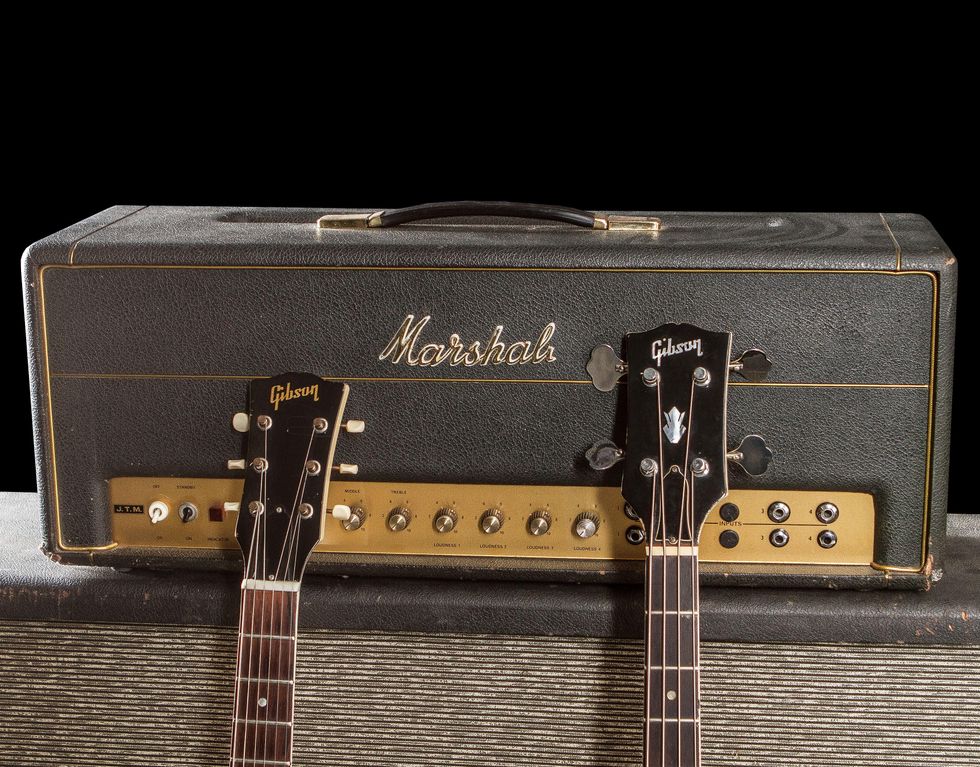
This 100-watt Marshall PA head, with four sets of inputs, is rare and currently valued at about $10,000.
The 1966 catalog describes the latter model as “a new, economy-priced solidbody bass by Gibson—it offers clear sustaining bass response, easy fast playing action, modern cherry red finish.”Although a custom color option is not mentioned, the 1968 example pictured is finished in a white similar to the SG TV. Like it’s SG counterpart on display this month, this bass has a single pickup and one volume and one tone control. The original price was about $240. The current value is $2,500.
Behind the instruments is a 1967 Marshall PA. This 1968 JTM100 Super PA head pushes 100 watts through two columns of four 12"20-watt Celestion greenback speakers. The controls on the head are power and standby switches, presence, bass, middle, and treble, plus four loudness controls for each channel, along with two input jacks each for channels 1 through 4. About £200 in British currency could get you this PA in 1967. The current value is $10,000.
Sources for this article include Gibson Electrics: The Classic Yearsby A.R. Duchossoir, Gibson Guitars: Ted McCarty’s Golden Era—1948-1966 by Gil Hembree, and The History of Marshall: The First Fifty Years by Michael Doyle and Nick Bowcott.
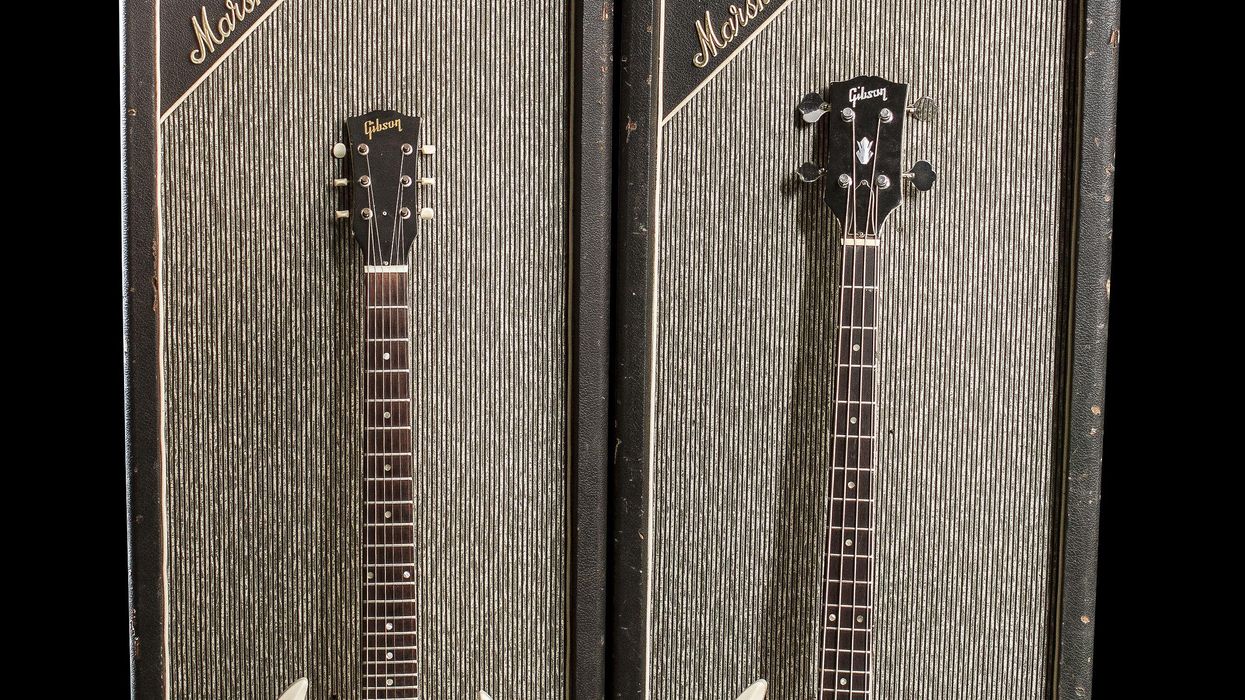
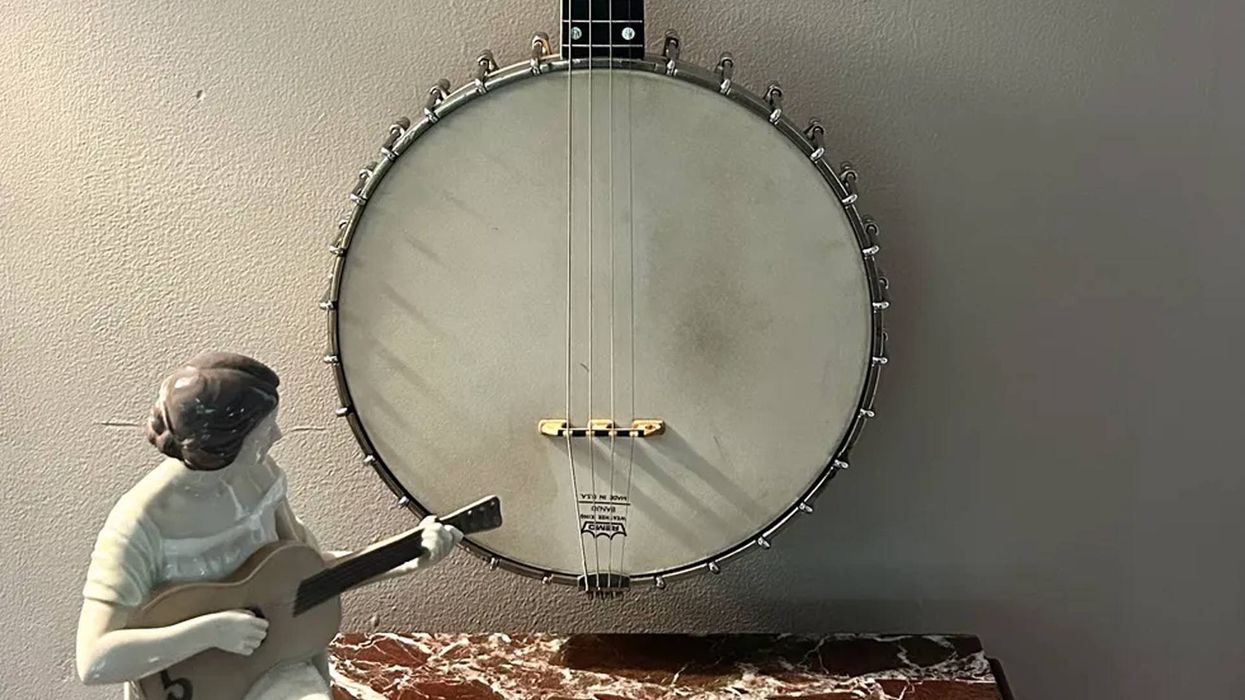
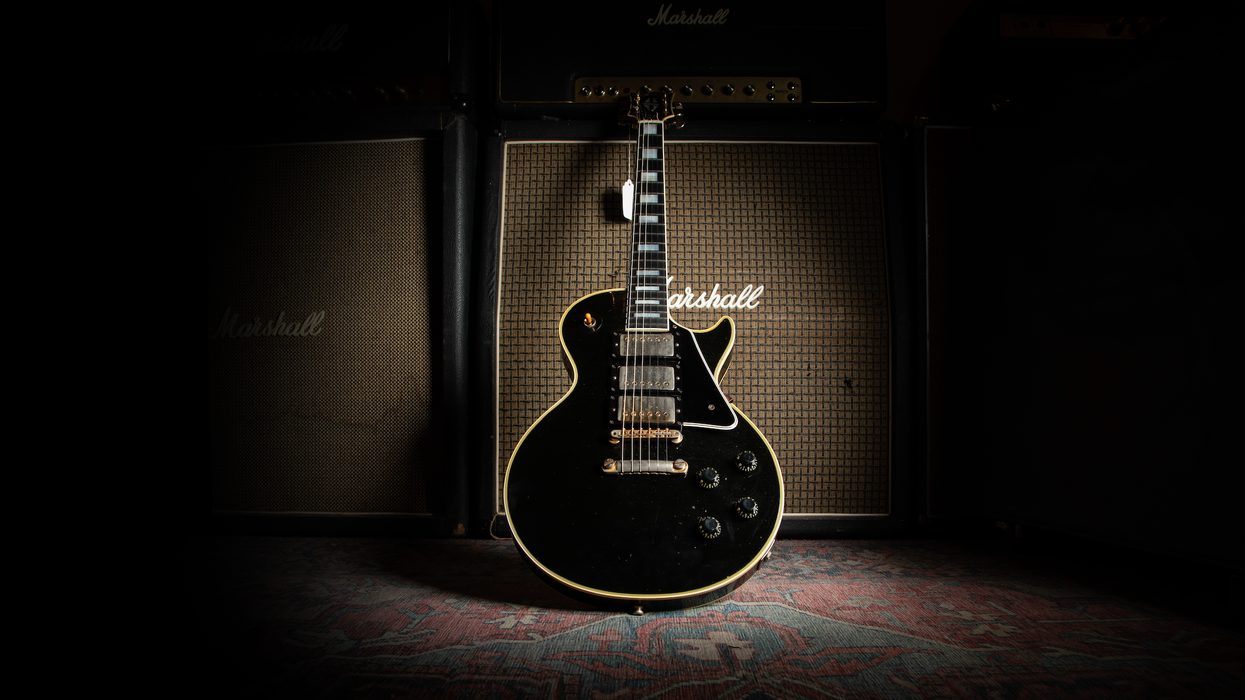
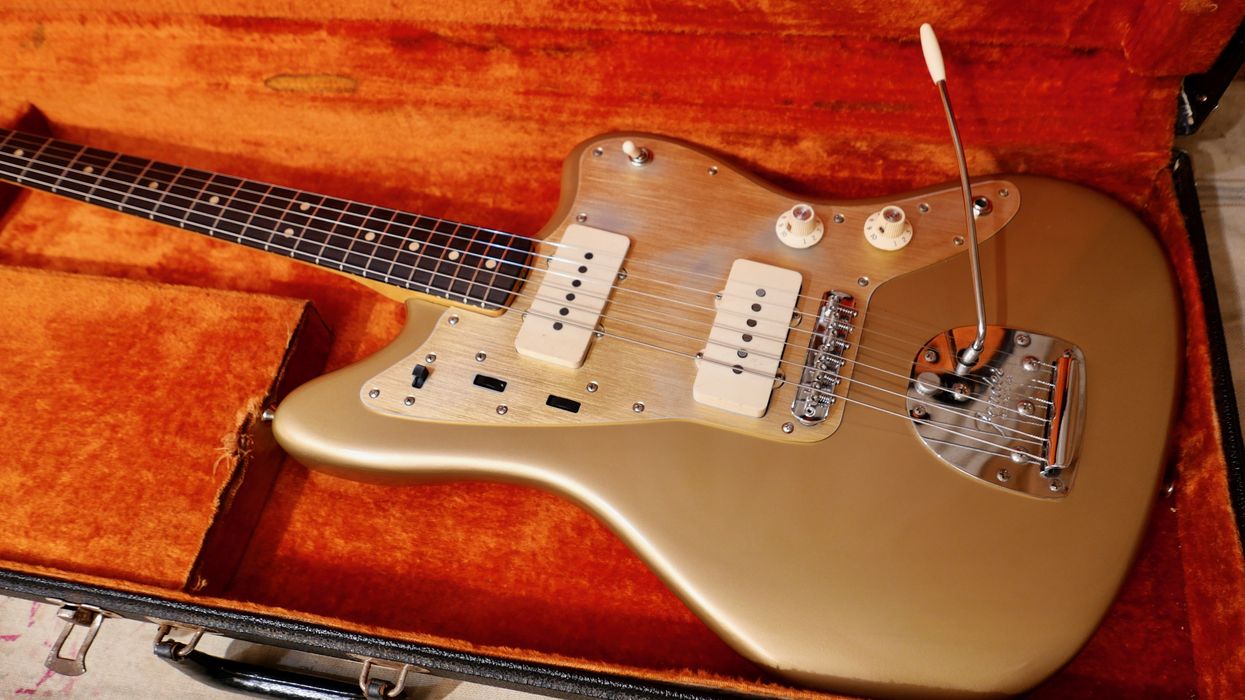
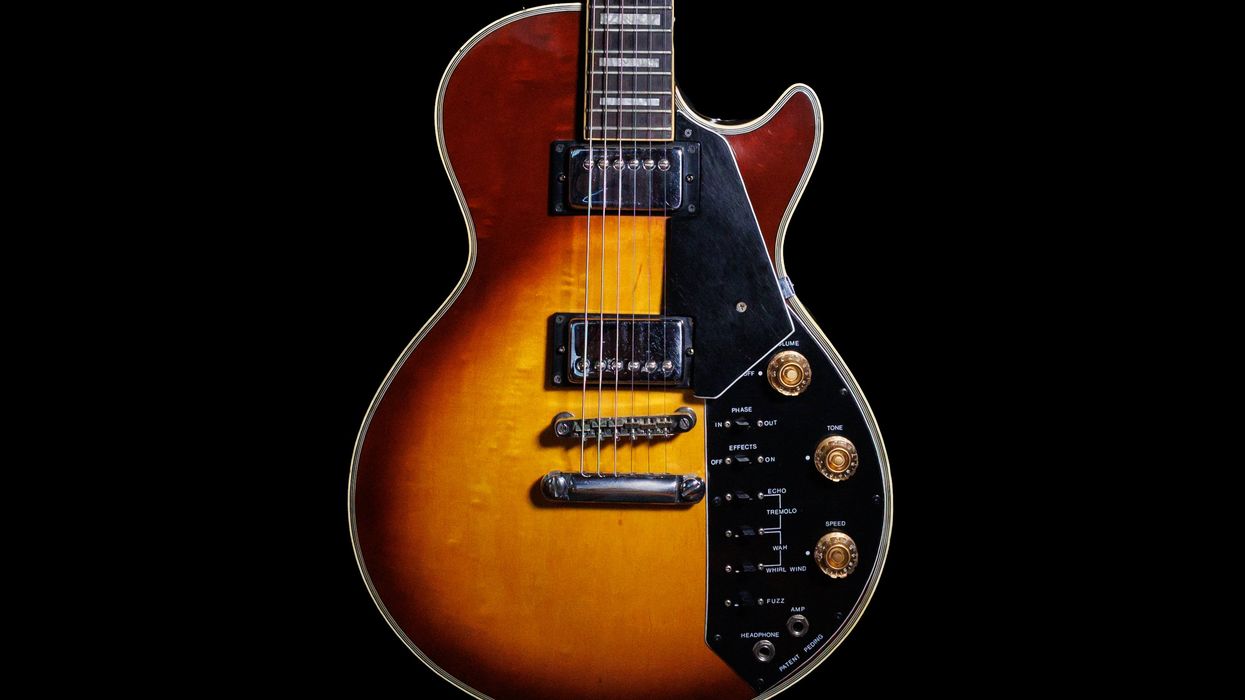

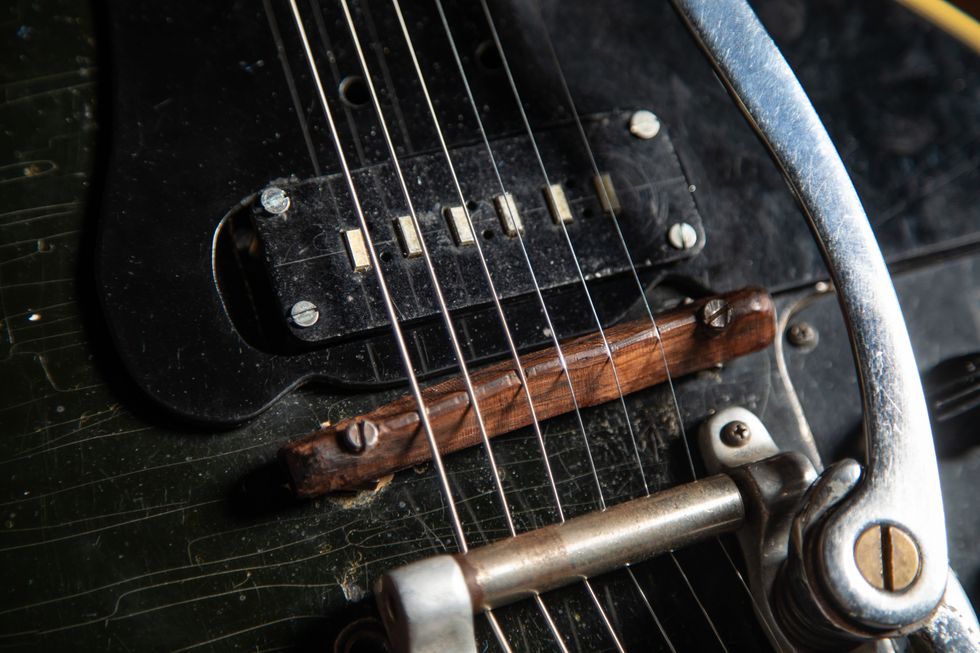





![Rig Rundown: AFI [2025]](https://www.premierguitar.com/media-library/youtube.jpg?id=62064741&width=1245&height=700&quality=70&coordinates=0%2C0%2C0%2C0)
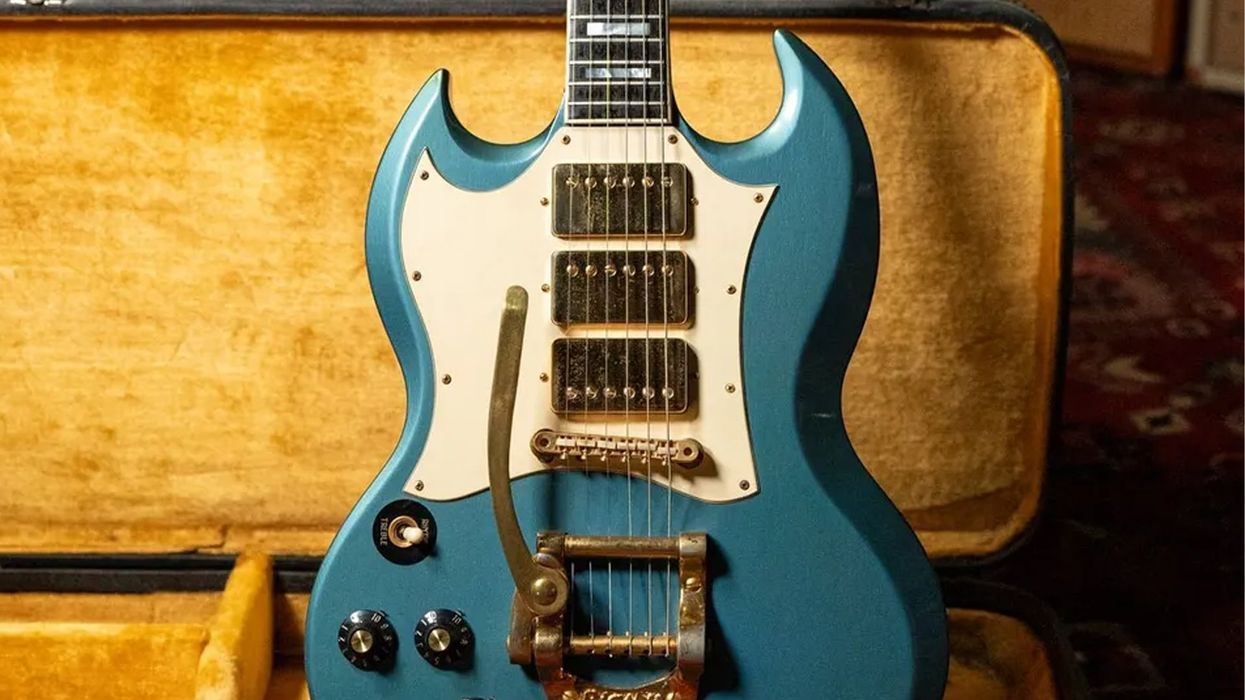

 Whether or not Jimi Hendrix actually played this guitar might come down to how lucky its buyer feels.Photo courtesy of Imperial Vintage Guitars Reverb Shop
Whether or not Jimi Hendrix actually played this guitar might come down to how lucky its buyer feels.Photo courtesy of Imperial Vintage Guitars Reverb Shop